A Universe Explodes: A Blockchain Book, from Editions At Play
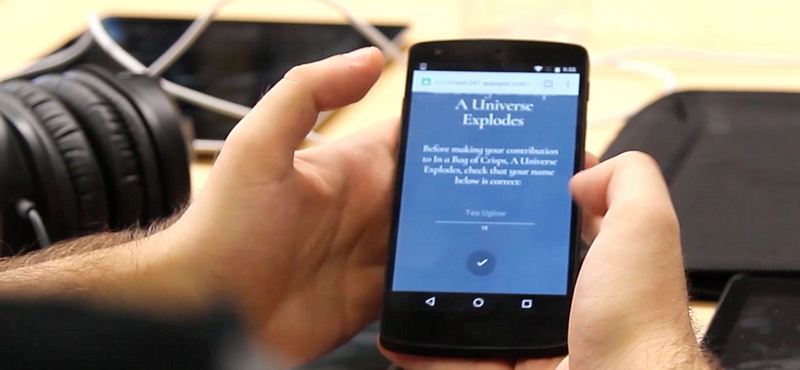
What could a digital book have to do with Blockchain (the tech behind Bitcoin)? And how can you ‘own’ a book, if anyone can read it? Well, we have some ideas…
As part of Editions At Play (our ongoing experimental platform to explore possibilities of digital books) these are the questions we got given to answer while developing one of our latest books, A Universe Explodes.
This Medium post is about sharing and teasing out the thinking that has gone into the concept, writing and development of this new Blockchain book of ours: A Universe Explodes. It is a story about a parent whose world gradually falls apart but also an experiment into ownership and digital culture, though it has taken us several months to get the point where we can condense these ideas into easy-ish nuggets.
Okay, so the book is accessible to all, but owned by only a few — and those who ‘own’ the book, are obliged to destroy it a little and to give it away. The story erodes with each owner, and through this process a notional value of the work increases. In the same way as any book will eventually fall apart, accumulate marks and fade. Books grow in value (both emotional or financial) as they age and we are interested to see if the same can be true of a digital book (or a digital ‘anything’). Confused? Let us explain.
It’s a book. On your phone. Well, on the internet. Anyone can read it. It’s 20 pages long. Each page has 128 words, and there are 100 of the ‘books’ that can be ‘owned’ . And no way to see a book that isn’t one of those 100. Each book is unique, with personal dedications, and an accumulation of owners, (not to mention a decreasing number of words) as it is passed on. So it is both a book and an cumulative expression of the erosion of the self and of being rewritten and misunderstood. That is echoed in the narrative: the story is fluid, the transition confusing, the purpose unclear. The book gradually falls apart in more ways than one. It is also kinda geeky.
“We’re not sure, but we think this may be the first time a book has been ‘owned’ and exchanged using blockchain. We’re pretty sure it’s the first time Google have officially bought space on the blockchain.”
The geeky part is that the book uses Blockchain to create a limited-edition that anyone can read but with one hundred individual ‘books’ that can be owned. We call this idea Cultureblocks. Each block is a digital bookmark containing that book’s history and previous owners.
In this book we have two rules.
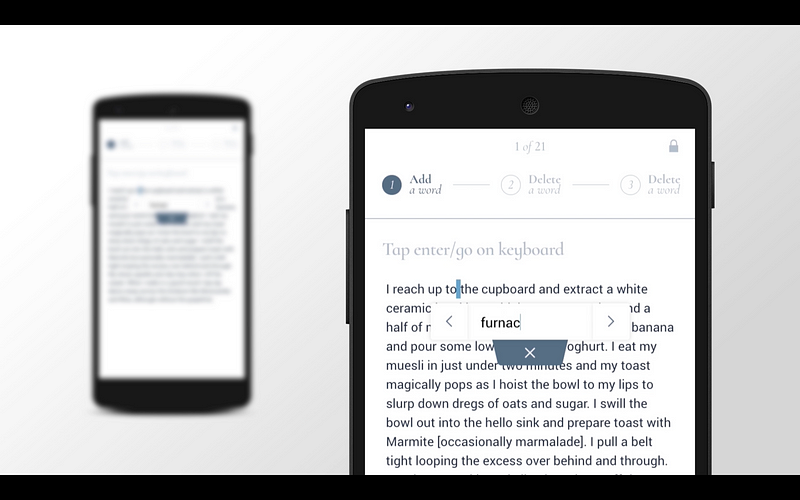
The first rule is that for the reader to own the book, they “must erase two words on each page and add one word”. The addition can be smart, stupid, rude or the same word recently erased. In this way the books are initially identical but quickly become unique — each having a lineage of owners, dedications, and words added and removed.
The second rule says that when an owner finishes they must give their book away and dedicate it to a new owner. This is our equivalent of pressing ‘submit’, creating a bespoke mark for each “copy” and allows the owner to document their ownership to the Cultureblock, which works a lot like a ledger, or even an old school library card
Beyond this we have little control, much like a normal book; and importantly we have no way of contacting the owner, like a normal book. (Although we do have a lost & found department to rescue ‘lost’ books).
This project is about THREE different things.
1 Ownership: The idea of books which are ‘owned’ and passed from owner to owner even though they are just mini-websites. And equally, that anyone online can access and read those books.
2 Blockchain: We use Blockchain — the technology behind Bitcoin — to manage ownership of the book across time. Saying ‘blockchain’ is like saying “quantum computing”, you know it exists, but…
3 Literature: It’s a digital book — so the story, about the passing of time and the sadness of loss, actually affects the book itself — with pages losing meaning the more it is read.
We’re wrapping all that together into something that we think could be a wonderful experience that transcends those three ideas. Or perhaps it’s just very confusing. If so, we made you this film:
If you’re still reading here then you qualify as “interested”. So let us pull apart our thinking a bit more!
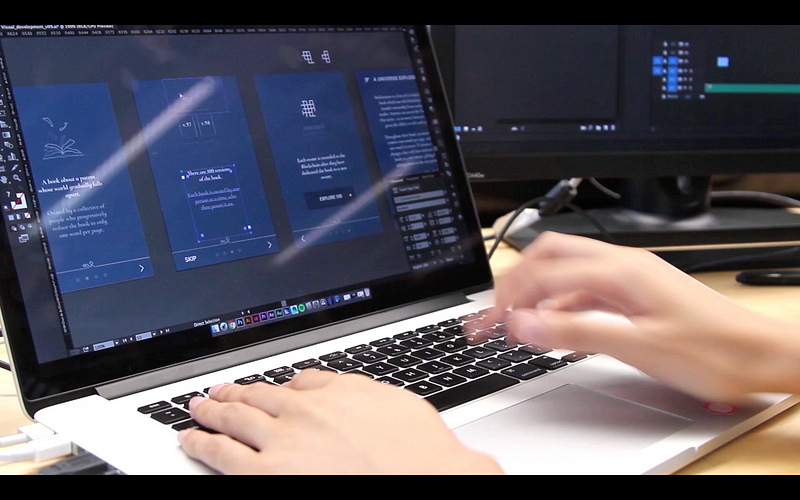
It is unlikely anyone will read the first (digital) drafts of this book, or find it on their grandfather’s bookshelf. The work was written, and rewritten, and lost a hundred times before it hit your screen, to be lost again. In the act of creation *digital creation* is ephemeral, more like improv theatre than classical literature.
This is a modern problem. On social media we create and destroy our self-image and recreate our self, being written up and over by those around us, or by sporadic erudite trolls. True disintegration would be something of a blessing. (We deconstruct ourselves now, Jacques.)
1. in the ‘real’ world a shared book will fall to pieces, pages rip, words smudge.
2. in the public world we demand reduction, fewer words, snappier copy.
3. in the protagonist’s world everything disappears, becoming dust.
4. in the reader’s world the act of destruction is a privilege of ownership.
If it is about anything, the story is about significance. The search for significance in a world whose value systems are, well, a little awry. For example we feel there is a significance and meaning to traditional ideas of ‘owning’ that we might want to think about before we lose our understanding of what that traditionally meant.
When we buy something in a shop we can normally hold it, use it and then give it away, or sell it on ebay. So what are we missing online?
- We can’t hold it if it is online. It isn’t tangible. Fine.
- We can’t sell it. Or give it away. You don’t have the right to resell the apps you bought. Sharing is also controlled by your contract, that is not a right.
- We can use it. Ideally. Online you have a license to access (and do stuff) to the thing.
Those three qualities of buying something are important, but there is something to the idea of Ownership, that is different to Access.
POSSESSION. The ability to hold it.
ACCESS. The ability to use it.
OWNERSHIP. The ability to share it, sell it, bin it, burn it.
Online we don’t ‘buy’ ownership. We hire. We buy a license to access, and the license we get is non-transferrable and often a bit wordy.
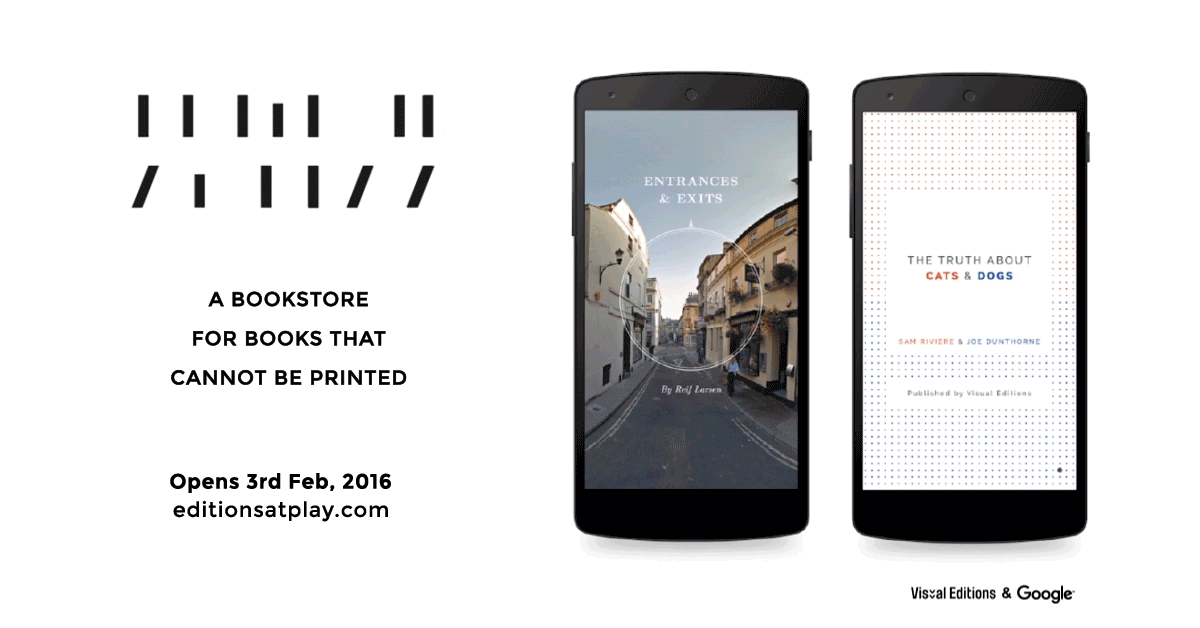
In our first experiment with digital books: Editions at Play, Visual Editions and Google’s Creative Lab teamed up with Google Play to sell a license to access digital books — books that by their nature could not be printed out or held. The experiment was about the digital qualities of a book.
We realised that the infrastructure meant that we were selling access-to-books, not, well, books. This was not the relationship between the reader and the book that we were trying so hard to replicate. It also made us realise that like a paperback, these digital experiments fall apart quite fast. Yet the implications of a license were that, unlike a book, it would last forever. If you own a book offline you look after your possessions, but this is not the case online. Our experience did not correspond with how we instinctively wanted readers to respond to our books. That they should have the sense of owning something special. So we began to think about how we might do that online.
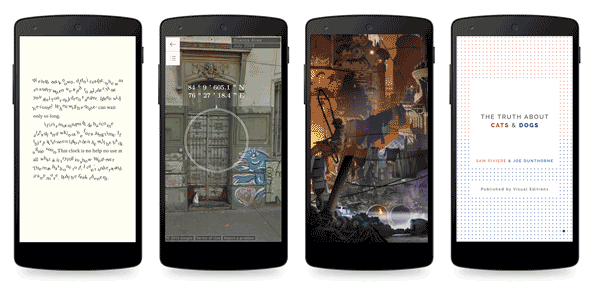
We wanted to explore a way to demonstrate proof of ownership that was visible, but for items that were invisible, (literally) a series of bits (binary digits) whose physical location is often hard to ascertain.
Somehow this led us to the very brilliant Kim and Kwame at Impossible, and over a mind-bending couple of days they explained how we could do this using Blockchain, the distributed ledger that powers Bitcoin and will come to be an important influence on public life.
- The Blockchain allows us to create a list of changes (like a ledger, or library card) for a book (the website).
- As a book changes hands we write this information into the ‘ledger’ where it is publicly visible and permanent. So only one person can ‘own’ the book at a time.
- We call this a Cultureblock. Each block is stored in a long chain of blocks called the Blockchain.
- It is different from a normal database because, well, that bit is quite complicated — but the important details are that the information is permanent and public. Unlike a regular database which is hidden and entries can be edited. Because it is visible that means anyone can see who owns a book, and because the owners names cannot be edited you can trust that it is true. There is no undo button on the blockchain.
If you want to know more about blockchain and how it works (nb. it is quite complicated) we have written a different blogpost with Kwame and his amazing team at Impossible — they were responsible for introducing us to the ideas and they worked to build our blockchain experience.
We’ll spare you the details of exactly how this works because really, you don’t need to understand. Just as you don’t understand how your car works, or your phone, or the stock market, or quantum physics. They just do.
What it let us do is write a story, and then share it with the world, whilst also letting people ‘own it’ just to see if that a) made a difference to their experience of the book and b) was ‘better’ than just reading it. It also let us write a book shaped by new forms of literature where the technology and the narrative and the experience of reading or owning are all as important to our understanding of the book and readers’ experiences of it. We wanted to share and explore the idea that ownership of digital can be distinct from a stream or a license to access, and equally that technology is something that can inspire writers to push the potential of the form as well as their word-count.
So that’s why we did it. Hopefully that was helpful. Most of all we truly hope you enjoyed the book.
♥♥

** special thanks to our Fivers of 2015 & 2016: Jennifer Nunez, Emila Yang, Nicci Hurwitz, Hanley Weng, Daisy Smith, Annabel Blake, Deborah Ho, Simon Blanckensee and Hugh Kennedy. x
